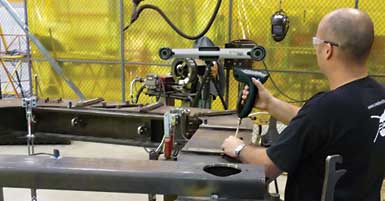A lot has happened since computer-assisted metrology was invented. In its early stages, computer numerical controlled (CNC) machines were used to control manufactured parts, and it was not until the 1970s that computer-controlled coordinate measuring machines (CMMs) appeared on the market and brought increased precision and acquisition speed.
|
ADVERTISEMENT |
Later on came portable CMMs, which introduced freedom of movement to the concept, but failed to eliminate some of the drawbacks—such as setup rigidity, which is inevitable to measurement accuracy with this type of device. In the case of portable CMMs, both the device and the part require environmental stability because both entities are considered as one rigid body during the measurement process.

The HandyPROBE portable coordinate measuring machine (CMM)
…
Add new comment